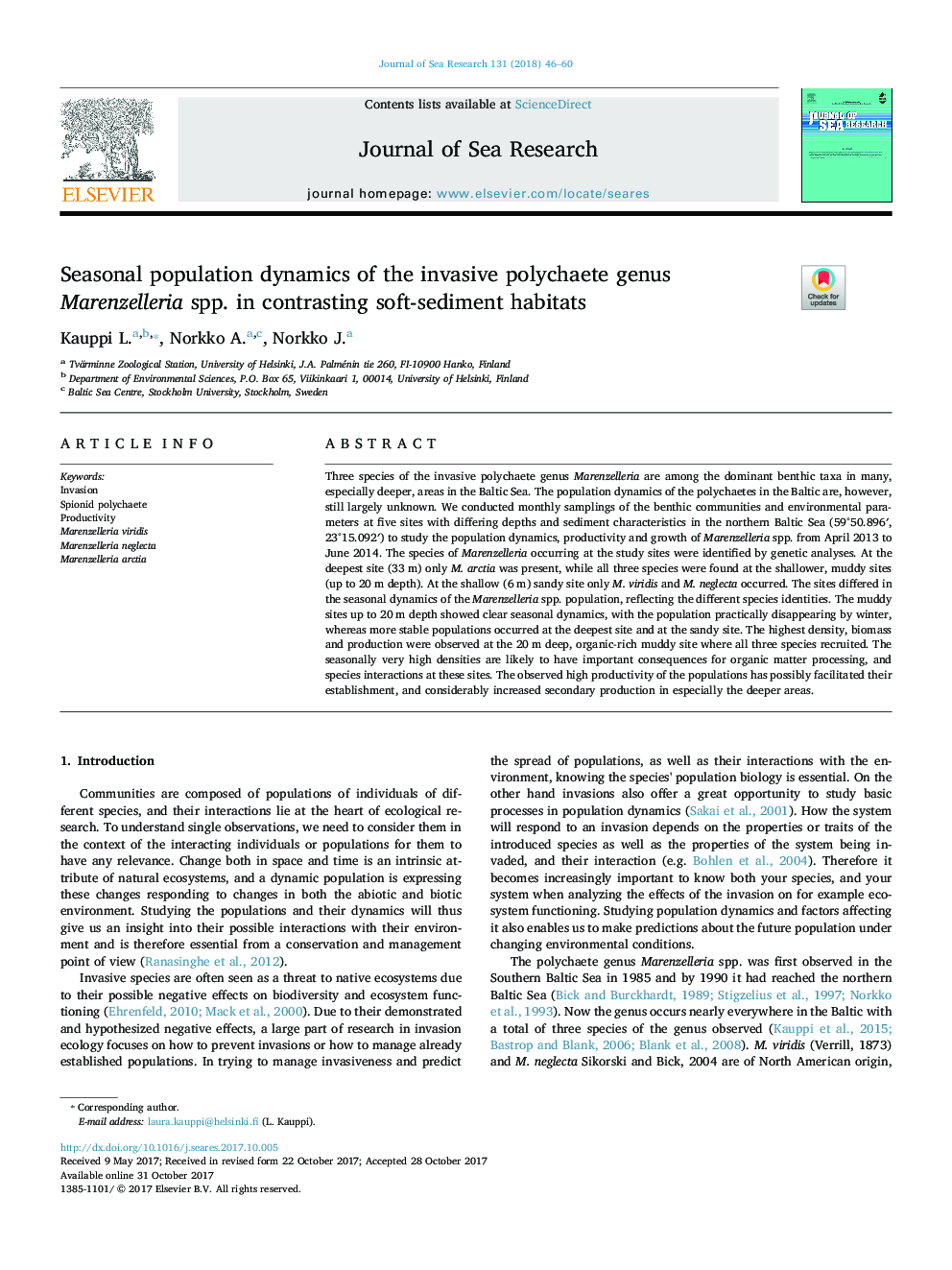| Article ID | Journal | Published Year | Pages | File Type |
|---|---|---|---|---|
| 8886185 | Journal of Sea Research | 2018 | 15 Pages |
Abstract
Three species of the invasive polychaete genus Marenzelleria are among the dominant benthic taxa in many, especially deeper, areas in the Baltic Sea. The population dynamics of the polychaetes in the Baltic are, however, still largely unknown. We conducted monthly samplings of the benthic communities and environmental parameters at five sites with differing depths and sediment characteristics in the northern Baltic Sea (59°50.896â², 23°15.092â²) to study the population dynamics, productivity and growth of Marenzelleria spp. from April 2013 to June 2014. The species of Marenzelleria occurring at the study sites were identified by genetic analyses. At the deepest site (33 m) only M. arctia was present, while all three species were found at the shallower, muddy sites (up to 20 m depth). At the shallow (6 m) sandy site only M. viridis and M. neglecta occurred. The sites differed in the seasonal dynamics of the Marenzelleria spp. population, reflecting the different species identities. The muddy sites up to 20 m depth showed clear seasonal dynamics, with the population practically disappearing by winter, whereas more stable populations occurred at the deepest site and at the sandy site. The highest density, biomass and production were observed at the 20 m deep, organic-rich muddy site where all three species recruited. The seasonally very high densities are likely to have important consequences for organic matter processing, and species interactions at these sites. The observed high productivity of the populations has possibly facilitated their establishment, and considerably increased secondary production in especially the deeper areas.
Related Topics
Physical Sciences and Engineering
Earth and Planetary Sciences
Oceanography
Authors
Kauppi L., Norkko A., Norkko J.,
